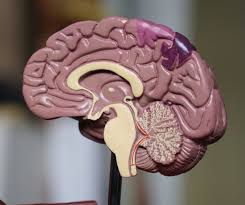Neurology disorders refer to conditions that impact the brain, spinal cord, and nerves, which together control nearly every function in the body. These disorders can affect movement and coordination by disrupting the communication between the brain and muscles. Challenges with mobility and physical precision are some of the most noticeable effects, highlighting how integral the nervous system is to daily activity.
Healthcare professionals and caregivers alike often encounter the complex relationship between neurological conditions and physical functionality. The effects can vary depending on the specific region of the nervous system involved, but they frequently include difficulties with balance, fine motor skills, and overall body control.
The Connection Between Neurology and Movement
The nervous system plays a direct role in initiating and controlling voluntary and involuntary movements. Our brain processes information, sends signals through the spinal cord, and communicates instructions to muscles. Neurology disorders interfere with this process, often leading to irregular movements or a general lack of control.
Conditions like Parkinson’s disease, multiple sclerosis (MS), and amyotrophic lateral sclerosis (ALS) are known to affect motor functions directly. For instance, Parkinson’s disease can cause tremors, stiffness, or slowness in movement, making tasks requiring precision more challenging. Similarly, MS patients may experience spasms and gait issues due to disrupted nerve signals. These conditions demonstrate how neurological health influences how individuals move and interact with their environment.
Disorders Impacting Balance and Coordination
Certain neurological disorders are associated with difficulties maintaining balance or executing coordinated movements. Some conditions lead to ataxia, a symptom that results in unsteady or clumsy motions due to impaired coordination. Cerebellar ataxia, which stems from dysfunction in the cerebellum, exemplifies this by diminishing a person’s ability to regulate stance and posture.
Balance issues are not just limited to physical problems in the cerebellum. Vestibular dysfunction, occurring in the inner ear or its neural pathways, can also result in significant instability. Other conditions, such as stroke or traumatic brain injury, may impair both fine and gross motor skills. Rehabilitation and therapies play a role in helping individuals regain some of these lost abilities, but outcomes differ based on injury severity or illness progression.
Neurological Disorders and Muscle Tone
Changes in muscle tone are common among those with neurological disorders, further complicating movement and coordination. Some conditions result in hypotonia or reduced muscle tone, which makes limbs feel weak and increases joint instability. On the other hand, spasticity, an increase in muscle tightness, characterizes disorders such as cerebral palsy.
Nerve damage also contributes to strength loss and motor control deficits. The peripheral nerves, responsible for carrying signals from the central nervous system to the limbs and muscles, are key in this process. Disruption of these pathways can hinder smooth and controlled motions, leaving individuals with jerky or uncoordinated movements.
Practical Steps for Managing Movement Issues
Effective management of neurological disorders and their impact on movement often involves a combination of therapeutic approaches. Physical therapy offers tailored exercises to strengthen muscles, improve flexibility, and enhance overall coordination. Occupational therapy aids individuals in adapting daily activities to accommodate new challenges. Treatment often involves medical interventions, including medications to manage symptoms like tremors, stiffness, or spasms. Assistive devices such as braces or walkers help improve mobility and reduce fall risks. Professionals may also incorporate alternative therapies such as aquatic therapy or yoga.
Regain Confidence in Everyday Tasks
Neurology disorders pose challenges, but understanding their effects on movement and coordination creates opportunities to provide better care and improve quality of life. Addressing these impacts requires a multi-faceted approach rooted in therapy, education, and the appropriate use of medical resources.
For those looking to learn more about tailored strategies to support mobility and coordination, contact a relevant healthcare professional or specialist. With increased understanding and the right tools, adapting to these challenges becomes more manageable.

Leave a Reply